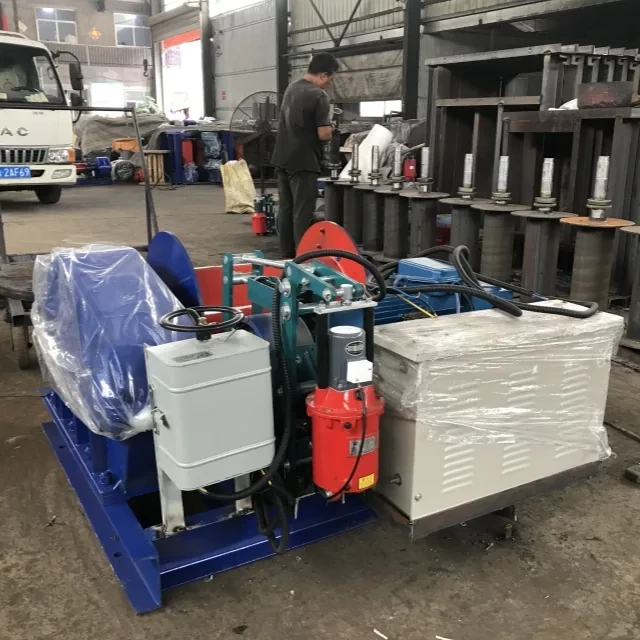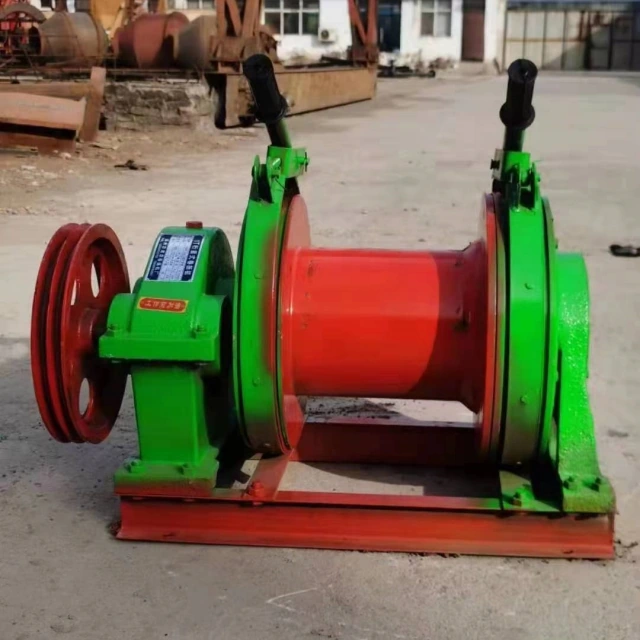Selecting the perfect winch isn’t just about pulling power—it’s about matching your tool to the job’s demands. Whether you’re recovering vehicles, hauling marine equipment, or powering construction projects, the wrong choice can mean inefficiency, safety risks, or costly downtime. This guide breaks down winch types by power source, key selection factors, and industry-specific recommendations to help you make an informed decision.
Winch Types by Power Source
Manual Winches: Where Simplicity Meets Limitations
Manual winches are the most basic option, relying on hand-cranked mechanisms. They’re lightweight, portable, and require no external power—ideal for:
- Light-duty tasks (e.g., hauling small boats onto trailers)
- Emergency backups where power isn’t available
- Budget-conscious users
Limitations:
- Limited load capacity (typically under 2 tons)
- Labor-intensive for repeated or heavy use
- Slower operation compared to powered alternatives
Ever wondered how manual winches handle extreme conditions? Their lack of complex parts makes them resistant to weather, but their human-powered design limits scalability.
Electric Winches: The Default Choice and Why
Electric winches dominate consumer markets due to their balance of power and convenience. Key advantages:
- Easier installation (direct battery connection)
- Variable speed control
- Lower upfront costs than hydraulic systems
Drawbacks:
- Risk of overheating during prolonged use
- Limited efficiency in submersible or high-moisture environments
- Dependent on battery life
Pro Tip: For off-road recovery, electric winches like those from Garlway offer a sweet spot of 8,000–12,000 lbs capacity, but monitor duty cycles to prevent burnout.
Hydraulic Winches: Heavy-Duty Power Unleashed
Hydraulic systems excel in industrial settings, offering:
- Consistent power output (no overheating)
- Higher load capacities (20+ tons for crane operations)
- Durability in harsh environments (marine, mining)
Trade-offs:
- Require existing hydraulic systems (e.g., on tractors or cranes)
- Higher maintenance costs for seals and pumps
- Less portable due to system dependencies
Case in Point: A Garlway hydraulic winch can pull irrigation systems in agriculture all day without power dips—but only if your equipment has hydraulic hookups.
Key Factors in Winch Selection
Load Capacity vs. Operational Environment
Always choose a winch rated for at least 1.5× your max expected load. Consider environmental stressors:
- Saltwater exposure: Hydraulic or marine-grade electric winches resist corrosion.
- Dust/debris: Sealed electric models outperform manual ones in construction sites.
- Temperature swings: Hydraulic systems maintain performance in extreme cold/heat.
Power Availability and Energy Efficiency
- No onboard power? Manual or portable electric winches work.
- Continuous use? Hydraulic avoids electric winches’ duty-cycle limits.
- Energy costs: Electric winches drain batteries faster than hydraulic systems use fluid.
Maintenance Costs Across Winch Categories
| Winch Type | Maintenance Needs | Longevity |
|---|---|---|
| Manual | Minimal (lubricate gears) | 5–10+ years |
| Electric | Battery checks, motor servicing | 3–7 years |
| Hydraulic | Seal replacements, fluid leaks | 10–15+ years |
Did You Know? A Garlway hydraulic winch’s higher upfront cost may pay off in lifespan for farming operations.
Industry-Specific Recommendations
Off-Road Recovery: Manual vs. Electric Showdown
- Manual: Backup option for lightweight vehicles; unreliable for stuck 4x4s.
- Electric: Best for most recoveries (e.g., Garlway’s 10,000-lb models). Prioritize waterproofing and synthetic ropes.
Marine Applications: Corrosion Resistance Priorities
- Hydraulic: Ideal for winching heavy nets or anchors; immune to saltwater damage.
- Electric: Only with IP68 ratings; avoid submersing standard models.
Construction Sites: Hydraulic Dominance Explained
- Why hydraulic? They handle 24/7 lifting of steel beams without overheating.
- Electric alternatives: Use for intermittent tasks like material positioning.
Conclusion: Matching Your Winch to the Mission
Your winch should align with three pillars: load requirements, environmental conditions, and power access. For most users:
- Casual/DIY: Electric winches offer the best value.
- Industrial/Marine: Hydraulic systems deliver relentless power.
- Emergency/Backup: Manual winches provide fail-safe simplicity.
Garlway winches are engineered to meet these diverse needs—whether you’re scaling a mountain or building a skyscraper. Ready to upgrade? Assess your priorities, then invest in the tool that won’t let you down.
Related Products
- Ready Mixer Machine for Construction Ready Mix Machinery
- Electric and Hydraulic Winch for Heavy Duty Applications
- Portable Concrete Mixer Machine Equipment for Mixing Concrete
- Small Electric Winch 120V and 240V for Compact Applications
- Commercial Construction Mixer Machine for Soil Cement Mixing Concrete
Related Articles
- Optimizing Concrete Mixer Safety: How Proactive Tire and Suspension Maintenance Prevents Catastrophic Failures
- How to Choose the Right Concrete Type for Every Construction Challenge
- How to Choose Concrete Mixers for Long-Term Reliability and Cost Savings
- How to Test Concrete Mixer Brake Systems for Optimal Safety and Compliance
- How to Conduct OSHA-Compliant Concrete Mixer Inspections: A Safety-First Checklist






















